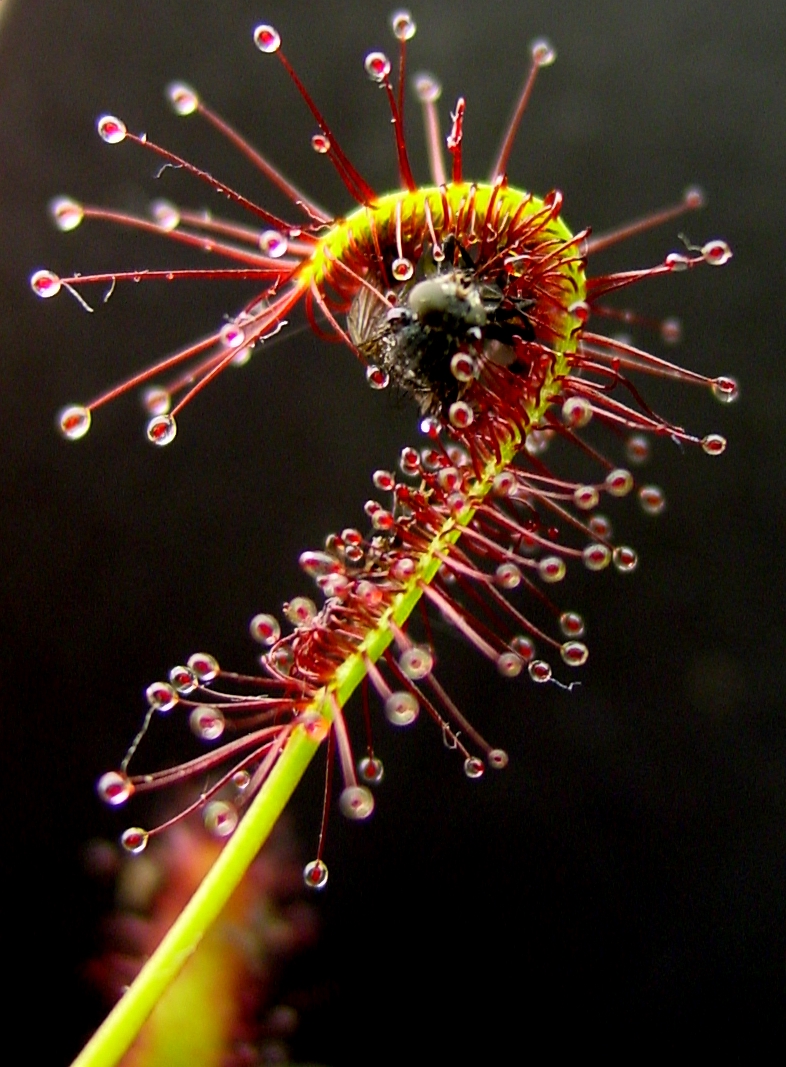Trichomes on:
[Wikipedia]
[Google]
[Amazon]
 Trichomes (; ) are fine outgrowths or
Trichomes (; ) are fine outgrowths or

 Plant trichomes have many different features that vary between both species of plants and organs of an individual plant. These features affect the subcategories that trichomes are placed into. Some defining features include the following:
* Unicellular or multicellular
* Straight (upright with little to no branching), spiral (corkscrew-shaped) or hooked (curved apex)
* Presence of
Plant trichomes have many different features that vary between both species of plants and organs of an individual plant. These features affect the subcategories that trichomes are placed into. Some defining features include the following:
* Unicellular or multicellular
* Straight (upright with little to no branching), spiral (corkscrew-shaped) or hooked (curved apex)
* Presence of
 Trichomes (; ) are fine outgrowths or
Trichomes (; ) are fine outgrowths or appendage
An appendage (or outgrowth) is an external body part or natural prolongation that protrudes from an organism's body such as an arm or a leg. Protrusions from single-celled bacteria and archaea are known as cell-surface appendages or surface app ...
s on plant
Plants are the eukaryotes that form the Kingdom (biology), kingdom Plantae; they are predominantly Photosynthesis, photosynthetic. This means that they obtain their energy from sunlight, using chloroplasts derived from endosymbiosis with c ...
s, algae
Algae ( , ; : alga ) is an informal term for any organisms of a large and diverse group of photosynthesis, photosynthetic organisms that are not plants, and includes species from multiple distinct clades. Such organisms range from unicellular ...
, lichen
A lichen ( , ) is a hybrid colony (biology), colony of algae or cyanobacteria living symbiotically among hypha, filaments of multiple fungus species, along with yeasts and bacteria embedded in the cortex or "skin", in a mutualism (biology), m ...
s, and certain protist
A protist ( ) or protoctist is any eukaryotic organism that is not an animal, land plant, or fungus. Protists do not form a natural group, or clade, but are a paraphyletic grouping of all descendants of the last eukaryotic common ancest ...
s. They are of diverse structure and function. Examples are hairs, glandular hairs, scales, and papillae. A covering of any kind of hair on a plant is an indumentum
In biology, an indumentum (Latin, literally: "garment") is a covering of trichomes (fine "hairs") on a plant or of bristles (rarely scales) of an insect.
Plants
The indumentum on plants can have a wide variety of functions, including as ...
, and the surface bearing them is said to be pubescent.
Algal trichomes
Certain, usually filamentous,algae
Algae ( , ; : alga ) is an informal term for any organisms of a large and diverse group of photosynthesis, photosynthetic organisms that are not plants, and includes species from multiple distinct clades. Such organisms range from unicellular ...
have the terminal cell produced into an elongate hair-like structure called a trichome. The same term is applied to such structures in some cyanobacteria
Cyanobacteria ( ) are a group of autotrophic gram-negative bacteria that can obtain biological energy via oxygenic photosynthesis. The name "cyanobacteria" () refers to their bluish green (cyan) color, which forms the basis of cyanobacteri ...
, such as '' Spirulina'' and ''Oscillatoria
''Oscillatoria'' is a genus of filamentous cyanobacteria. It is often found in freshwater environments. Its name refers to the oscillating motion of its filaments as they slide against each other to position the colony to face a light source. ...
''. The trichomes of cyanobacteria may be unsheathed, as in ''Oscillatoria'', or sheathed, as in '' Calothrix''. These structures play an important role in preventing soil erosion
Soil erosion is the denudation or wearing away of the Topsoil, upper layer of soil. It is a form of soil degradation. This natural process is caused by the dynamic activity of erosive agents, that is, water, ice (glaciers), snow, Atmosphere of Ea ...
, particularly in cold desert climate
The desert climate or arid climate (in the Köppen climate classification ''BWh'' and ''BWk'') is a dry climate sub-type in which there is a severe excess of evaporation over precipitation. The typically bald, rocky, or sandy surfaces in desert ...
s. The filamentous sheaths form a persistent sticky network that helps maintain soil structure.
Plant trichomes
 Plant trichomes have many different features that vary between both species of plants and organs of an individual plant. These features affect the subcategories that trichomes are placed into. Some defining features include the following:
* Unicellular or multicellular
* Straight (upright with little to no branching), spiral (corkscrew-shaped) or hooked (curved apex)
* Presence of
Plant trichomes have many different features that vary between both species of plants and organs of an individual plant. These features affect the subcategories that trichomes are placed into. Some defining features include the following:
* Unicellular or multicellular
* Straight (upright with little to no branching), spiral (corkscrew-shaped) or hooked (curved apex)
* Presence of cytoplasm
The cytoplasm describes all the material within a eukaryotic or prokaryotic cell, enclosed by the cell membrane, including the organelles and excluding the nucleus in eukaryotic cells. The material inside the nucleus of a eukaryotic cell a ...
* Glandular (secretory) vs. eglandular
* Tortuous, simple (unbranched and unicellular), peltate (scale-like), stellate (star-shaped)
* Adaxial vs. abaxial
{{Short pages monitor